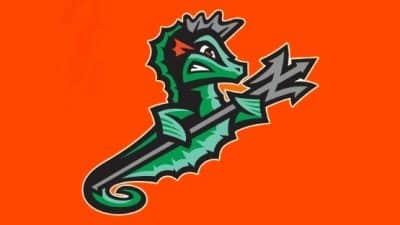
“I don’t know how to explain it, and I don’t have any statistical data to back it up. I look around the country, and I see scores all the time. I see Miami winning 1-0 in 10 innings, you see games 3-2, 4-3,” O’Connor said after the Sunday Clemson series finale.
The statistical data bear O’Connor out. In 2013, ACC teams averaged 6.06 runs per game; in 2014, ACC teams are scoring 5.32 runs per game, a drop of 12.2 percent.
Home runs are also down significantly. ACC teams averaged .527 home runs per game in 2013; they’re averaging .396 home runs per game in 2014.
The power outage was on full display in the UVa.-Clemson series, which saw the teams combine for 14 runs over the three games, with UVa. taking the series despite just scoring five runs all weekend.
O’Connor is not lost in terms of possible reasons why.
“Certainly, when they made the change with the bats a few years ago, it made a big difference from an offensive output standpoint,” the coach said.
A similar power outage was noticed last summer across summer college baseball. The Valley Baseball League that plays across the Blue Ridge saw its offensive numbers impacted even more dramatically than we’ve seen in the ACC, and numbers were also down noticeably in the Cape Cod, Northwoods and Alaska in 2013.
Observers in the VBL noted that the baseballs seemed different, i.e. much less springy, in 2013 compared to 2012 baseballs.
Nobody is saying that about baseballs used in the ACC this year, but the less lively bats have been at play for a few years now, so it’s hard to pin the offensive struggles on that.
Whatever the cause, the impact on how the game is played is obvious.
“You play a three-game series against Clemson, two physical offensive teams, we have some physical guys, they do, too, and there’s one home run hit. That wasn’t the case four, five years ago. You’d play Clemson in a three-game series, and there might be four, five balls hit out of the ballpark,” O’Connor said.
“So when you’re having to collect hits to get three hits to score a run, it’s difficult to do. It’s difficult to have a big inning unless the other team screws up, quite frankly, walking guys and making errors. And I think it’s attributed to, you just don’t see as many home runs being hit anymore,” O’Connor said.
The next words out of Coach O’Connor’s mouth were stunning, considering his own background as a top college pitcher who has built a top national program around pitching and defense.
“I wish we could go back, quite frankly, but we can’t. It is what it is,” O’Connor said.
Yeah, pick your jaw up off the floor. The new way of things in college baseball does tend to work out in O’Connor’s favor, which is maybe why his team, hitting .236 and scoring 3.6 runs per game in ACC play in 2014, has still managed to start 30-6 and is ranked #1 in the country.
“You have to figure out as a coach, if that is the case, you have to figure out, What do we need to do on a consistent basis to win college baseball games. And I think we’re doing those things, and that is, great pitching, and playing really good defense,” O’Connor said.










